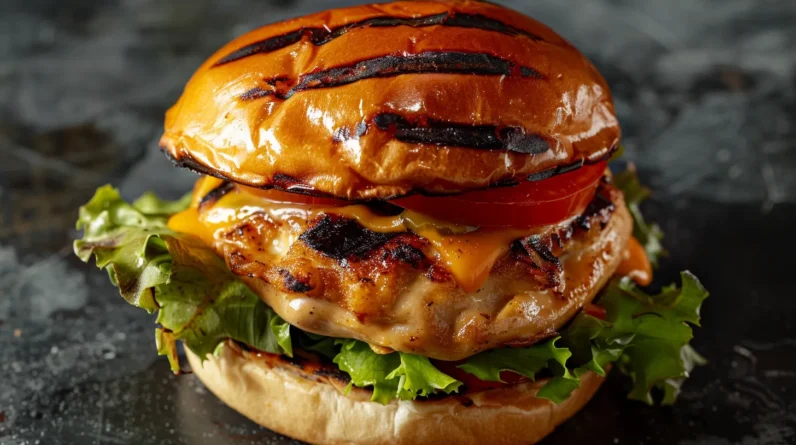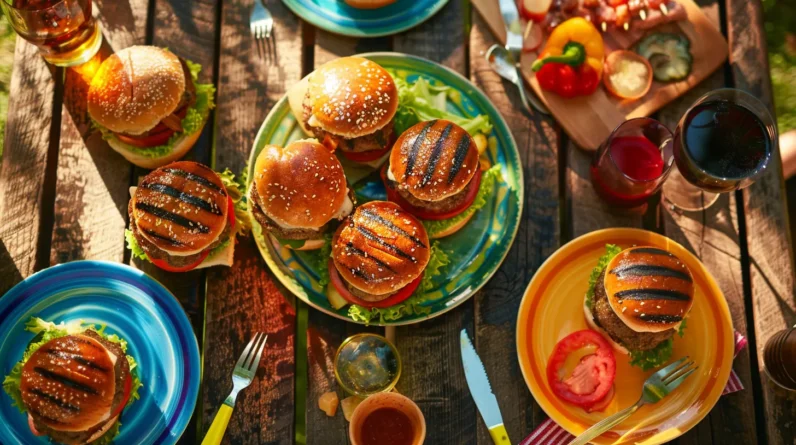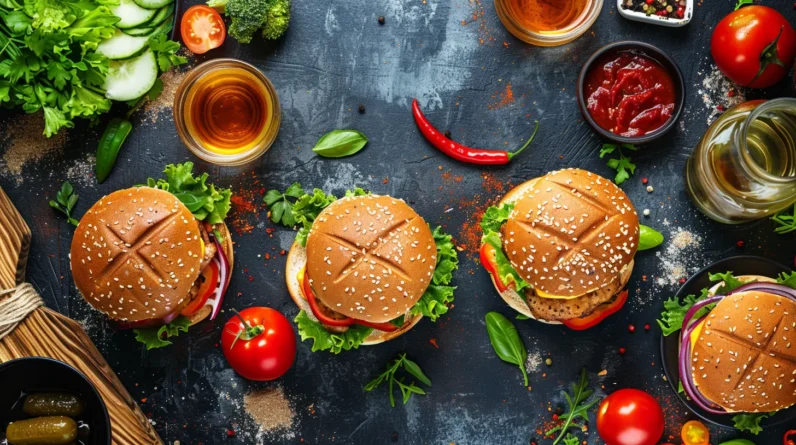
As we commence on the quest for the perfect chicken burger, the texture tantalizes our taste buds like a siren’s call, beckoning us to explore the secrets of its elusive consistency. We’ve all been there – biting into a patty that’s either too dense or too dry, leaving us wondering what went wrong. The truth is, achieving that ideal texture is a delicate balancing act, where every element, from meat selection to cooking methods, plays an essential role. And that’s exactly what we’re about to uncover – the techniques and tricks to crafting a chicken burger that’s both juicy and firm, with a texture that’s nothing short of sublime.
Understanding Patty Structure
We explore the patty structure by dissecting its composition, which consists of a protein matrix, fat, water, and other additives that collectively influence the final texture of the chicken burger. The protein matrix, composed of myosin and actin, provides the framework for the patty’s texture. Fat, primarily in the form of triglycerides, affects juiciness and tenderness. Water, which makes up a significant portion of the patty, impacts the final consistency.
Additives like salt, pepper, and binders further modify the texture. By understanding the interactions between these components, we can optimize the patty structure to achieve the perfect texture. We’ll explore further into the relationships between these components, examining how they can be manipulated to create a burger that’s both juicy and firm.
Choosing the Right Meat
Selecting the ideal chicken meat for our burger patty is essential, as it greatly affects the final texture, with factors like protein content, moisture levels, and fat distribution influencing the overall quality of the product.
We opt for fresh, boneless, and skinless chicken breast or thigh meat, as they provide a better balance of protein, fat, and moisture. Leaner meats, like breast, yield a denser patty, while thigh meat contributes to a juicier, more tender product.
We avoid using mechanically recovered meat or processed chicken products, as they can introduce unwanted variations in texture and quality. By choosing the right meat, we set ourselves up for success in achieving the perfect burger texture.
Grinding and Mixing Techniques
Grinding the chosen chicken meat to the correct consistency is crucial, as it directly impacts the final patty texture and structure. We take a two-stage approach to achieve best results.
First, we grind the meat using a coarse plate (around 1/4 inch) to break down the fibers and release the natural binders. This step helps to create a more uniform texture and prevents over-processing.
Next, we re-grind the mixture using a finer plate (around 1/8 inch) to achieve the desired consistency. We recommend keeping the meat cold throughout the process to prevent fat smearing and ensure a cleaner grind.
Importance of Binding Agents
By incorporating binding agents into our chicken burger mixture, we can greatly improve patty cohesion and structure, ultimately leading to a more enjoyable eating experience. These agents help to strengthen the protein network, allowing the patty to hold its shape and retain its texture.
Common binding agents include egg whites, breadcrumbs, and oats. We’ve found that using a combination of these agents yields the best results. The key is to strike a balance between binding and moisture content, as excessive binding can lead to a dense, dry patty.
Role of Moisture Content
As we aim to achieve the perfect chicken burger texture, we must carefully manage moisture content, acknowledging that a key balance is essential to preventing patties that are either too dry and crumbly or too wet and fragile.
We’ve found that ideal moisture levels range between 65% and 75%, allowing for a tender yet resilient patty. Excess moisture can lead to a fragile, prone-to-breaking texture, while insufficient moisture results in dryness and crumbliness.
To achieve this balance, we control moisture by adjusting the ratio of chicken breast to thigh meat, as well as the amount of added ingredients like breadcrumbs and egg. By doing so, we can create a patty with the perfect texture – juicy, yet cohesive and intact.
Effect of Fat Percentage
We’ve consistently observed that the fat percentage in chicken burgers greatly influences the final product’s texture, with ideal levels ranging from 20% to 25%. Below this range, burgers tend to be dry and crumbly, while excessive fat can make them too soft and prone to breakage.
The best fat percentage allows for a harmonious balance of juiciness and structure. Fat also plays a vital role in emulsification, helping to bind ingredients together and create a cohesive patty.
When fat percentage is within the ideal range, we’ve found that the burger’s texture is more resilient to changes in temperature and handling, resulting in a more consistent and satisfying eating experience.
Cooking Methods and Times
Cooking chicken burgers to the ideal internal temperature, typically between 160°F and 165°F, greatly impacts their texture, with undercooking leading to a soft, soggy patty and overcooking resulting in a dry, crumbly one.
We’ve found that grilling or pan-searing at medium-high heat yields the best results, as it allows for a nice sear on the outside while cooking the inside to the desired temperature. Cooking times will vary depending on patty thickness, but a good rule of thumb is to cook for 5-7 minutes per side for a 3/4-inch patty.
We recommend using a thermometer to confirm the patty reaches the optimal internal temperature, ensuring a juicy and tender burger with the perfect texture.
Resting and Handling Patties
How crucial is the brief resting period after cooking, during which the juices redistribute, allowing the patty to maintain its tenderness and texture? We find that even a short 2-3 minute rest can make a significant difference in the final product.
During this time, the proteins relax, and the juices redistribute, resulting in a more even texture. When handling patties, we recommend gentle manipulation to prevent compacting the meat, which can lead to a dense, tough burger. Instead, we use a light touch, carefully placing the patty on the bun or plate.
This attention to detail guarantees our chicken burgers boast a tender, juicy texture that’s sure to impress. By mastering the resting and handling process, we can achieve a truly exceptional burger experience.
Temperature Control Essentials
By precisely regulating the cooking temperature, we can guarantee that our chicken burgers reach a safe internal temperature of 165°F (74°C), while also achieving the best doneness to preserve their tender, juicy texture.
To accomplish this, we employ thermometers to monitor the temperature of our griddles, grills, or ovens. We set our cooking surfaces to the ideal temperature range of 375°F to 400°F (190°C to 200°C), depending on the cooking method.
Achieving Consistency in Mass Production
In high-volume production, we implement standardized cooking procedures and rigorous quality control measures to guarantee our chicken burgers meet exacting texture and doneness standards every time.
We’ve developed a precise cooking protocol that ensures consistent results, regardless of the production scale. This involves monitoring and controlling factors like cooking time, temperature, and pressure to maintain uniformity.
Our quality control team conducts regular checks to verify that our burgers meet the desired texture and doneness parameters. By combining these measures, we can confidently deliver high-quality chicken burgers with consistent texture, every time.
This attention to detail enables us to maintain our reputation for excellence in the industry.
Conclusion
As we master the intricacies of chicken burger texture, our patties transform into tender, juicy, and succulent masterpieces. The harmonious balance of protein, fat, and moisture is akin to a symphony, with each element playing its role in perfect harmony. With every bite, the texture melts in our mouths, a demonstration of our precision and attention to detail.
We’ve cracked the code, and our chicken burgers are now a culinary delight, a true sensory experience that leaves a lasting impression.







